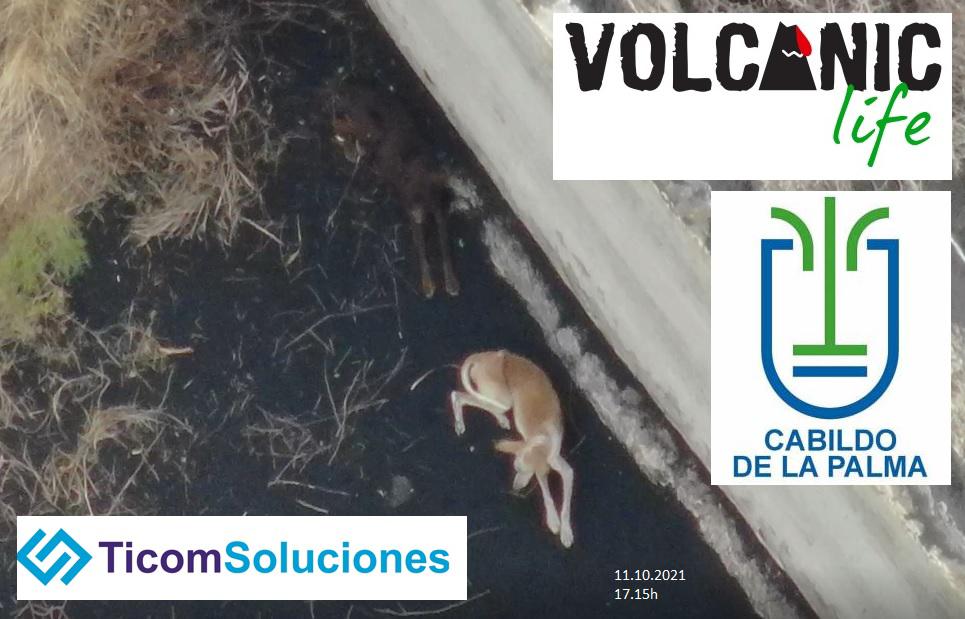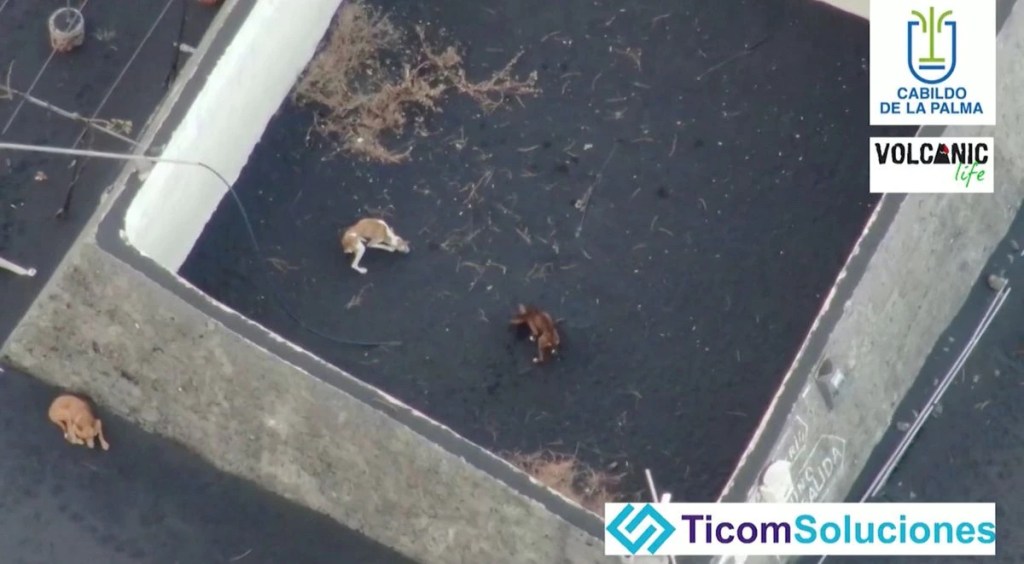
Much attention has been turned to the spectacular destructive forces of continuing volcanic activity on the Spanish island of La Palma. Now two groups are using drones to care for overlooked victims of the volcano: Dogs left stranded and starving by advancing lava flows.
[October 19 update is below]
The local La Palma partners began flying drone missions last week in search of dogs and other animals trapped in remote areas after somehow surviving the molten lava that had surrounded them. Tech and communications company Ticom Soluciones has been using its UAVs to monitor the volcano’s activity for some time. It joined forces with educational and search and rescue organization Volcanic Life to stage missions locating any creatures that managed to escape their fiery entrapment – only to face dehydration and starvation while cut off from the rest of the island.
The missions began October 7 after live creatures were spotted in the upper part of La Palma’s Todoque area. Lava flows have cut off road access to and around the region, and ash that continues to be spewed into the air prevents helicopter operation. As a result, Ticom and Volcanic Life consulted with the local governing body, Cabildo de la Palma, and immediately got the okay to start piloting their drones to find as many animals stranded by the volcano as possible.
Video footage and still shots from those sorties uploaded by Twitter user NaqNab reveal some heartbreaking situations being found. One photo captures a considerably emaciated dog lying near a wall amid cooled black lava. A fast-speed video, meanwhile, shows an obviously terrified cat darting around what’s described as an empty swimming pool.
Locating trapped animals was only the first part of the mission, however. With transporting humans in to help get the stranded victims out impossible, the partners came up with Plan B: flying enough food and water to them to keep the critters alive until a permanent solution was feasible.
The result is countless missions already flown – and many more to come over what may be a long time indeed. According to NaqNab, the 24 days of eruptions in the area have destroyed “2268 buildings out of 18,857, 1502 out of 7361 plots, (and) 5 out of 11 roads.” Meanwhile, there’s no sign yet of the volcano returning to dormancy.
October 19 update:
In response to evolving video footage of three dogs trapped together by the lava – and becoming alarmingly emaciated despite the UAV airdrops of food and water – a third drone company has stepped up to propose airlifting the suffering creatures to safety and care.
After examining proposals by Spanish drone service provider Aerocamaras, aviation La Palmas authorities have approved the company’s plans to fly a 50 kg drone to where the dogs remain isolated, and attempt to lift them the 450 meters away from surrounding, active lava flows.
The planned operation would involve catching the weakened and rather listless dogs with remote-controlled nets fired from the UAV, then lifting them up, over, and away from the lava entrapping them.
The dogs’ condition and situation are considered sufficiently perilous that authorities figure the obviously tricky and technologically taxing airlift approach may be the only chance of saving them in time.
“It’s the first time an animal is being rescued with a drone and the first time it has to be captured,” Aerocameras CEO Jaime Pereira told Reuters. “If that’s the last option that the dogs have? Then we’re going after them.”
Trial flights to prepare the mission are under way. Aerocameras UAV pilots will have only four minutes to get each dog secured by a net, and another four minutes to fly them to safety a little under half a kilometer away. Taking any longer might leave the drone’s batteries too depleted to successfully complete the mission.
“What we don’t want is to run out of battery when flying over the lava,” Pereira said, stressing the importance of netting the dogs quickly. “They’ve been eating very little for weeks. They might come, or become scared of the drone. We really depend on their reaction.”

Little wonder, then, that Cabildo de la Palma has hailed the efforts of Ticom and Volcanic Life, and offered them as much support as it can provide.
“These companies… have selflessly made themselves available to the emergency, and their work has been fundamental in locating and caring for the animals,” its communiqué read. “They also have veterinary advice to choose the most appropriate food and water for this type of situation… (and) have communicated that they will continue with these tasks… as long as the weather and security conditions allow.”
FTC: We use income earning auto affiliate links. More.




Comments